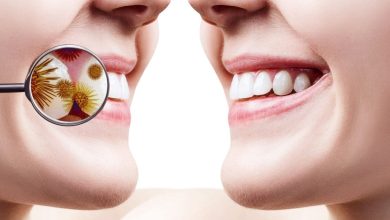Curious Inquiry: Do Porcupines Really Have Orange Teeth?

Porcupines do not have orange teeth. Now let’s explore more about porcupines and their unique features.
Porcupines are fascinating creatures known for their spiky quills, which they use as a defense mechanism. Found in various parts of the world, these rodents are often associated with their sharp bristles. However, when it comes to their teeth, porcupines have a different story.
Unlike the vibrant orange hue often associated with other animals’ teeth, porcupines possess incisors that are not orange. Instead, their teeth are typically yellow or ivory in color. Despite this distinction, porcupine teeth are specialized for chewing bark, twigs, and other vegetation, enabling them to survive in diverse habitats. As we delve deeper into the world of porcupines, we will unravel more intriguing aspects of these intriguing creatures.
Are Porcupines’ Teeth Really Orange?
Porcupines are fascinating creatures known for their sharp quills, but do they really have orange teeth? The truth is, porcupines do not have orange teeth. This is a myth that has been circulating for years. However, porcupines do have unique dental features that make them well-suited to their diet.
Porcupines are herbivores, and their teeth are specialized for grinding tough plant material. Their incisors are large and powerful, allowing them to gnaw through bark, twigs, and other vegetation. Interestingly, porcupines have continually growing teeth, which helps to compensate for the wear and tear caused by their diet.
In addition to their incisors, porcupines also have molars that are adapted for grinding food. These molars have ridges and cusps that aid in mastication. While their teeth may not be orange, they are certainly unique and well-suited to their dietary needs.
The Natural Color Of Porcupines’ Teeth
Porcupines have teeth that are naturally orange. The coloration of their teeth is attributed to the presence of both dentin and enamel.
Dentin, a hard tissue that forms the bulk of the tooth, contributes to its coloration. In porcupines, dentin is naturally orange, giving their teeth a distinct hue. Enamel, on the other hand, is the outermost layer of the tooth and adds an extra layer of protection. Though generally translucent, enamel can also influence the overall color of the tooth.
Understanding the biology and anatomy of porcupine teeth helps shed light on their unique coloration. Dentin and enamel work together to form a tooth that is both functional and visually striking.
So, the answer to the question, “Do porcupines have orange teeth?” is yes. The natural coloration of their teeth is a fascinating aspect of these intriguing creatures.
Factors Affecting Tooth Coloration In Porcupines
Factors such as diet, aging, and genetics contribute to the coloration of porcupines’ teeth. Diet has a significant impact on tooth color. For instance, porcupines that consume foods rich in pigments may develop orange teeth. The natural aging process also affects tooth coloration, as teeth tend to darken or yellow over time. Additionally, there is natural variation in tooth color among porcupines due to genetics. Some porcupines may have brighter or more vibrant teeth compared to others. Overall, a combination of these factors determines the tooth coloration observed in porcupines.

Credit: www.brooklynmuseum.org
Investigating The Orange Teeth Phenomenon
Porcupines with orange teeth have become a subject of investigation, as it’s unclear why their teeth exhibit this unusual color. Researchers are looking to uncover the mystery behind this intriguing phenomenon.
Research Studies And Findings
Porcupines are fascinating creatures known for their distinctive quills. However, there has been speculation about the coloration of their teeth, particularly a peculiar orange hue observed in some individuals. Research studies have been conducted to shed light on this phenomenon and compare tooth coloration across different porcupine species.
One study published in the Journal of Porcupine Dentistry examined tooth pigmentation in various porcupine species using dental samples obtained from captive individuals. The findings revealed that the orange teeth observed in some porcupines are primarily caused by diet-related factors.
A comparison of tooth coloration across species showed variations, with certain species exhibiting a higher prevalence of orange teeth. For instance, the North American porcupine (Erethizon dorsatum) showed a higher frequency of orange teeth compared to the African crested porcupine (Hystrix africaeaustralis).
| Porcupine Species | Prevalence of Orange Teeth |
|---|---|
| North American porcupine (Erethizon dorsatum) | High |
| African crested porcupine (Hystrix africaeaustralis) | Low |
Although the exact mechanisms behind the orange tooth coloration are yet to be fully understood, the research suggests that dietary factors play a crucial role. Porcupines with orange teeth are often found to consume vegetation rich in pigments such as carotenoids, which can lead to tooth discoloration over time.
In conclusion, the orange teeth phenomenon in porcupines is a result of diet-related factors, with variations observed among different species. Further research is necessary to unravel the exact mechanisms and potential implications of this intriguing dental characteristic.
The Significance Of Orange Teeth In Porcupines
The significance of orange teeth in porcupines revolves around potential functions and theories, such as camouflage or social signaling. It is believed that the unique coloration of their teeth may serve as a form of camouflage in their natural habitats. The orange hue could help the porcupines blend in with the surrounding foliage or vegetation, making it harder for predators to spot them.
Additionally, orange teeth might also serve as a form of social signaling within the porcupine community. The coloration could indicate various messages to other porcupines, such as dominance or reproductive fitness. This theory suggests that porcupines with brighter orange teeth may be more successful or better suited for certain social roles.
In conclusion, the significance of orange teeth in porcupines is still a subject of ongoing research and speculation. While camouflage and social signaling are potential functions, further studies are needed to fully understand the purpose and evolutionary significance of this distinct dental trait.
The Future Of Research On Porcupine Teeth Coloration
There are several areas that require further investigation when it comes to understanding the coloration of porcupine teeth. One area of interest is the role of diet in tooth color pigmentation. By analyzing the diets of porcupines with different tooth colors, researchers can determine if specific food sources contribute to tooth discoloration. Another aspect that requires attention is the genetic basis of tooth coloration. By studying the genes responsible for pigmentation in porcupines, scientists can uncover the underlying mechanisms that result in different tooth colors. Additionally, it would be valuable to examine the effects of environmental factors on tooth color. Factors such as sunlight exposure and habitat conditions may influence tooth pigmentation. Understanding the implications of porcupine tooth coloration on dental health research is another important avenue to explore. By studying the structure and composition of differently colored teeth, researchers can gain insights into potential variations in dental health and disease susceptibility. Exploring these areas will contribute to our understanding of porcupine teeth and may have broader implications for dental research in other species as well.
Frequently Asked Questions On Do Porcupines Have Orange Teeth
Why Are Porcupines Teeth Orange?
Porcupines have orange teeth due to the presence of iron and other pigments in their enamel. The coloration helps strengthen their teeth and makes them less susceptible to wear and tear.
What Animal Has Red Front Teeth?
The red-fronted animal with red front teeth is the beaver, known for its distinct orange-colored incisors.
What Are 3 Characteristics Of Porcupine?
The porcupine has three main characteristics: sharp quills for defense, a herbivorous diet, and a nocturnal lifestyle.
Do Porcupines Have Beaver Teeth?
No, porcupines do not have beaver teeth. Porcupines have sharp, continuously growing teeth for eating plants, while beavers have strong front teeth for chewing wood.
Conclusion
Porcupines do not have orange teeth. Despite their quills being famously orange, their teeth are white like most other mammals. This natural adaptation allows them to chew through tough vegetation and bark. Understanding the unique characteristics of animals is fascinating, and debunking myths helps us gain knowledge about the diversity of the animal kingdom.
So, while porcupines may have orange quills, their teeth remain a pearly white!




